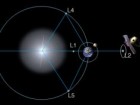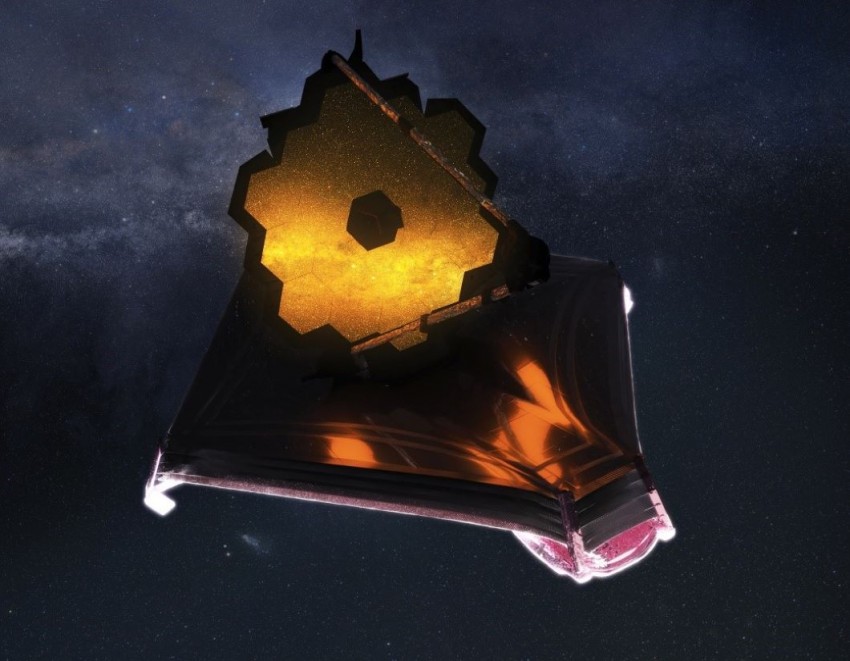
Today, at about 20:00 Polish time, we will be instructed to launch the Web Ground Control Machines and bring JWST into orbit around the L2 Ligation Point. The telescope will be in this place for at least 10 years. However, right now Indicates that everything can extend the work of the heater.
Currently, the James Web Space Telescope (JWST) is less than 6,000 km from its target orbit and is moving towards it at a speed of about 200 meters per second. The maximum temperature on the hot side is 55 degrees Celsius, and the minimum on the cold side is -210 degrees.

A lagrange point is a point in space in the structure of two bodies bound by gravity, which may be related to two bodies of the third body structure with the least mass. Here we are talking about the sun-earth system and the web telescope, the third body, the one with the least mass. In the structure of such three bodies, there are five lipid points named L1 to L5. Three of them are on the solar-earth line. In Earth view L3 is behind the Sun, L1 is between the Sun and Earth, and L2 is behind the Earth in Sun view. Therefore, the heat shield of the heater was the only point L2 that could simultaneously protect the mirrors and scientific instruments from the heat emitted by both the sun and the earth.
The telescope will not be placed at point L2, but will orbit it in an orbit that has a radius greater than the Moon. It will be up to 800,000 kilometers, and the web will take half a year to complete its orbit. But why not set the web to L2 exactly?
The release points move as the earth orbits the sun. Webb should follow L2. L2, L1 and L3 are metastable points. If you draw a gravity gradient at these points, it will be in the shape of a saddle. As if these points were on the edge connecting the two mountain peaks that extend above it. Towards both peaks, our points (L1, L2 and L3) are constant. When the ball is pushed towards one of the peaks, it returns to the starting point. However, on the sides of our edge, the valleys descend, and in these directions these points are unstable.
The easiest and most effective alternative to placing the heat on the L2 is to place it in orbit around that point. The advantage of this is that the rotating web glows evenly with the sun, without the earth experiencing a solar eclipse. This is very important for charging the solar panels of the telescope and maintaining the heat balance required for the precise operation of its equipment. In L2 orbit the heat of gravity is driven only by gravity. On the other hand, since L2 is metastable, the web will leave its orbit and take up its own orbit around the sun. So, every three weeks or so, it burns its engines and adjusts its course. No such problem at points L4 and L5. These are fixed points, and our mesh with gravitational changes has the shape of a bowl there. Therefore, the objects orbiting these points will be themselves in their orbits. Therefore, we know the asteroids orbiting L4 and L5, but not the other libration points.
Because Webb has to adjust his orbit, his working hours are limited by fuel. This telescope is expected to work for 10 years. However, we already know that it is possible to extend this time. This was due to the highly accurate launch of the Ariane rocket, which carried it into space. This accuracy used less fuel than planned during the two curriculum changes made by the web. So the telescope is likely to stay on L2 longer than planned. We must remember that no service work is planned for the telescope. So that it cannot refuel.
Placing the vehicle on the L2 is a very simple task. So the question remains, what is the fuel consumption rate adjustment for? The answer lies in web architecture. The telescope had to shoot its engines twice in flight because the Ariane rocket was fast enough to cover a distance of up to L2, but did not have enough energy to completely escape from the Earth’s gravitational field.
Admittedly, this could have given Ariane extra energy when it took off, but there was a risk that it would be a little too much and move too fast to enter orbit around Web L2. He can pass her. This problem can be solved by reducing the speed of the telescope. However, a web-breaking maneuver will use more fuel than course corrections. However, that is not the main problem, but the heat engines are placed on its hot side, facing the sun. So to make the web brake it has to rotate 180 degrees on its axis. Then his optical and scientific instruments, which require very low temperatures, are exposed to the direct influence of the sun, which heats up … they melt the bonded glue.
Once in orbit, Webb will begin a five-month process of testing and measuring glasses and scientific instruments. Scientists say the work will begin in June.

“Communicator. Problem solver. Gamer. Passionate writer. Analyst. Avid creator. Lifelong travel maven. Tv evangelist.”




More Stories
Choosing Between Russian and Greek Tortoises: Which is Right for You?
Choosing the Best Tools for Flawless Nail Art
Get Real Results: Buy Instagram Likes and Followers from InsFollowPro.com